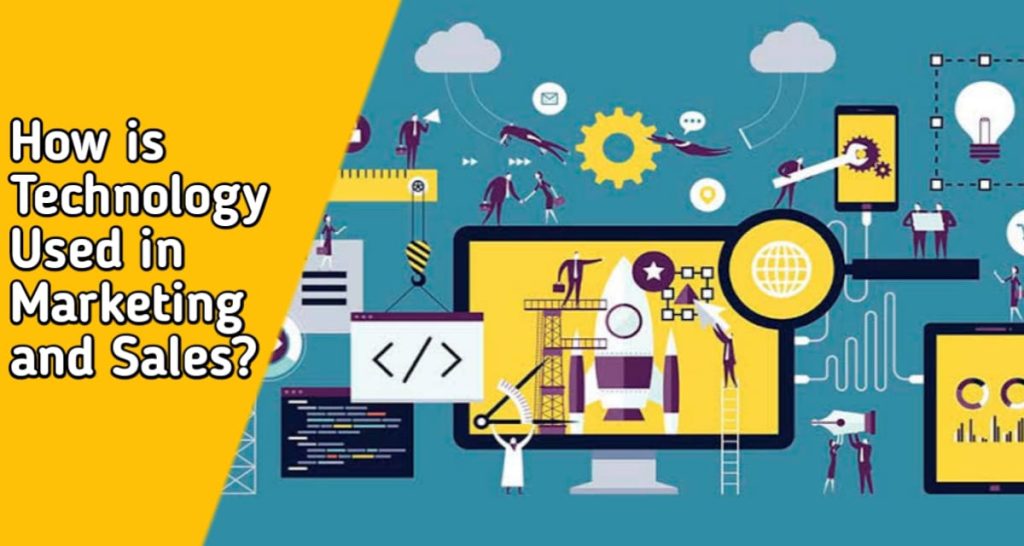What New Technologies Used in Marketing Today?
What new technologies are used in marketing today? Those are questions you may have on your mind, but which of these technologies can help you get ahead of the competition? Technology-enabled interactions, Augmented reality, Chatbots, and Machine learning are a few of the technologies being utilized by marketers today. You can take advantage of these powerful tools to improve your marketing strategy. Here are four key trends we’ll discuss.
Technology-Enabled Interactions
A key component of technology-enabled interactions is the generation of in-use information. While some information can be collected automatically, other information depends on the customer’s willingness to share it. This information will allow firms to derive real-time insights and improve their value delivery. In-use information is generated when a consumer interacts with a brand or service in a new way. For example, a new feature in an Uber car allows passengers to input their preferences.
Technological Advancements are Enabling New Forms of Consumer and Firm Interactions.
AR in retail, for example, can help consumers make better decisions. There are the New Technologies Used in Marketing. Chatbots can engage consumers in real-time, generating more data on their purchase intent, satisfaction, and brand evaluation. Such technologies are also helping to increase the amount of data that marketers need to make decisions. It’s important for firms to be aware of emerging technologies and be prepared for their potential impact.
The rise of the Internet of Things (IoT) has led to massive growth in the number of connected devices. The Internet of Things uses AI to enhance direct interactions among these devices. The advancement of these technologies has also paved the way for autonomous IoT systems such as smart cities, interconnected cars, and a smart energy grid. But technology-enabled interactions are only the tip of the iceberg.
New technologies like artificial intelligence (AI) and virtual assistants are allowing firms to conduct consumer-firm interactions in new ways. For example, AI can replace a human representative with a machine agent and enable firm-consumer interactions using the “word of machine” methods. These chatbots may be anthropomorphized and thus influence the consumer’s response. These new technologies are also enabling the use of avatars in firm-consumer interactions, though their effectiveness depends largely on their realism that’s the New Technologies Used in Marketing
A recent survey conducted by Forrester University shows that customer satisfaction surveys are the most important way to gather customer data. But these surveys aren’t enough. They need to include more context and data. A more comprehensive customer satisfaction survey is necessary to accurately assess customer satisfaction. Survey technology, social listening, and text analysis tools can help companies collect valuable feedback on their CX efforts. The results of these surveys and feedback can be analyzed over time, and the results can be used to make improvements.
Machine Learning
Marketing campaigns are full of repetitive processes. A marketer may have dozens of campaigns running at once, each with 10 different creative assets. A machine that uses machine learning techniques can learn to understand a person’s preferences and patterns and determine which combination will produce the best results. Marketing campaigns are full of data, and machine learning makes it easier to analyze data and perform tasks without human oversight. This makes it easier to improve pricing strategy, and ultimately increase profits. These are the New Technologies Used in Marketing.
For Example, Suppose a Customer Visits a Website Twice a Month.
On the first visit, the customer researches a product. After a year, that same customer only visits the website once a month and never purchases anything. This customer will most likely churn if you don’t use machine learning, and it will help you prevent this from happening. Machine learning is an invaluable tool in digital marketing.
With machine learning, marketers can better predict the future actions of their audience by analyzing previous data and using statistical estimations to predict their future behavior. With these data, they can test different campaigns and refine their models with more data. Ultimately, they’ll be able to target customers according to their preferences. And the better your customer experience, the more likely they are to return to your site. It’s all about personalization, and this means being as relevant as possible.
Another Example of How Machine Learning Works is in Predictive Analytics
With the help of this tool, marketers can learn what consumers are interested in and create content that is likely to generate conversions. This helps them increase their return on investment. If a customer doesn’t buy a certain product, the brand won’t suffer a loss if the customer doesn’t like it. Similarly, a product that has high conversion rates is likely to generate more sales.
Customer segmentation is essential for successful marketing in a company. Segmenting customers helps marketers target more relevant messages. As a result, machine learning algorithms for marketing automate this process. They identify hidden patterns within the data and then create smaller segments based on those patterns. With these segments, marketers can create personalized campaigns for each customer. This way, they can better target the right audience with the right message. And it makes the entire process faster and easier for everyone.
Augmented Reality
Augmented reality has many uses in the marketing world. In addition to helping with business-to-business sales, it can improve client interactions with products. Augmented reality can also help clients visualize future structures and creations. In some cases, it is even used in sports. Here are some examples of companies using augmented reality for marketing. Listed below are some of the most popular examples of how AR can be used in marketing.
AR systems comprise hardware, software, and services. In 2016, AR systems generated $1.1 billion in revenue. Of that, around thirty percent of revenue was generated by software development, while the rest came from hardware sales. Companies like Google and its partners have prioritized developing developer devices that meet regulatory requirements. As a result, the market for AR systems is growing quickly. To help businesses and developers make the most of augmented reality, they are working on software development. These are the New Technologies Used in Marketing.
One of the Best Examples of AR in Retail is Sephora’s Virtual Artist Tool.
The virtual makeup application allows customers to try on products without going into the store. Increasingly, augmented shopping experiences are becoming more popular than ever. In fact, Sephora has even begun allowing customers to try on clothes and makeup without going to the store. This helps customers choose the right products and ultimately boosts customer satisfaction. Ultimately, AR can be a powerful tool for marketers.
In B2B sales, the ability to use augmented reality technology can improve the experience of customers. Before implementing AR technology, sales representatives would use printed brochures, PowerPoint presentations, and other traditional sales tactics. Today, however, sales reps can access custom augmented reality applications that allow them to virtually tour a stadium or view virtual 360-degree product lines. Using augmented reality in B2B sales can improve the entire sales process.
Another use for AR in marketing is in e-commerce. In retail, augmented reality can help improve customer satisfaction and increase conversions. When used in stores, it can enhance the shopping experience for customers, making it more enjoyable for consumers and enhancing the business’s brand image in the market. If used correctly, augmented reality will provide an edge over competitors. This technology is just starting to take the market by storm, but the potential is huge.
Chatbots
As the use of AI continues to evolve, so do the uses of chatbots in marketing. Chatbots have become more natural-sounding, making them perfect for conventional forms of marketing, competitive intelligence, and customer service. They can learn from users, answer questions, and improve purchase processes. Additionally, they can learn about customer preferences. Read on to discover the benefits of using chatbots in marketing. This article examines some of the most common applications of chatbots in marketing.
When creating a marketing chatbot, keep in mind that some leads will not respond. If this is the case, you can use segmentation to determine the most effective time to send messages. Aside from this, you should also be aware of how much each lead will respond to your messages. If you find that some of your leads aren’t responding, you can make the chatbot’s messages more personalized. You can even use it as a tool to embed a billing application and route users to real people.
Similarly, a chatbot can streamline the customer experience by providing real-time information. Universal, for example, has an assistant bot for its website that provides users with information about the wait times for rides. It also coordinates with messaging applications to give users more information. A good chatbot will represent your core brand in a way that will make customers want to purchase from it. A great example is Sephora’s assistant chatbot which integrates seamlessly into Facebook Messenger. These are the New Technologies Used in Marketing.
Besides Boosting Sales, Chatbots are Useful for Customer Support.
By bypassing the account creation process, digital assistants can extend the brand experience to existing platforms. For example, chatbots can introduce brand colors or storylines and help solve lead generation and nurturing problems. Another important use for chatbots in marketing is to help marketers engage with customers through omnichannel channels. Chatbots can even remind people who abandoned their shopping carts.
Although chatbots are still a relatively new technology, they are rapidly becoming a staple in many companies. They can help marketing teams optimize their strategies by automating customer service. They can be trained to answer customer questions and send notifications to customers, while also reducing the workload of human agents. Millennials are more likely to engage with chatbots than they do with a live agent. They have a better overall experience with chatbots.
Read more about technology



I am sorting out relevant information about gate io recently, and I saw your article, and your creative ideas are of great help to me. However, I have doubts about some creative issues, can you answer them for me? I will continue to pay attention to your reply. Thanks.
Your article made me suddenly realize that I am writing a thesis on gate.io. After reading your article, I have a different way of thinking, thank you. However, I still have some doubts, can you help me? Thanks.